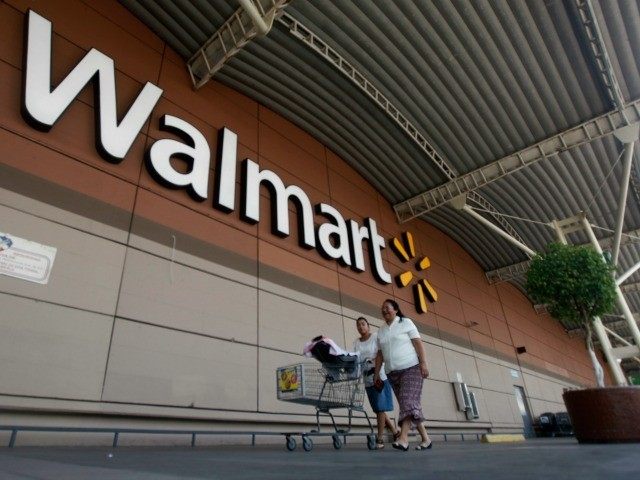Mark J. Perry writes at the American Enterprise Institute about polling data that shows Americans’ mistaken impression of corporate profit margins is “totally fascinating,” and he’s absolutely right. It’s amazing how wrong the popular imagination is, and it has major political implications.
Perry cites a string of polls across a span of decades, which demonstrate the public has always had a tremendously inflated idea of corporate profit margins, in every industry, with their impressions particularly high in the case of political hot potatoes including the oil industry and Walmart:
When a random sample of American adults were asked the question “Just a rough guess, what percent profit on each dollar of sales do you think the average company makes after taxes?” for the Reason-Rupe poll in May 2013, the average response was 36%! That response was very close to historical results from the polling organization ORC’s polls for a slightly different, but related question: What percent profit on each dollar of sales do you think the average manufacturer makes after taxes? Responses to that question in 9 different polls between 1971 and 1987 ranged from 28% to 37% and averaged 31.6%.
How do the public’s estimates of corporate profit margins compare to reality? Not surprisingly they are off by a huge margin. According to this Yahoo!Finance database for 212 different industries, the average profit margin for the most recent quarter was 7.5% and the median profit margin was 6.5%. Interestingly, there wasn’t a single industry out of 212 that had a profit margin as high as 36% in the most recent quarter. The industry “REIT-Diversified” had the highest profit margin at 33.5% followed by just one other industry – Wireless Communications at 30.9% – with a profit margin higher than 30%.
“Big Oil” companies (Major Integrated Oil and Gas) make a lot of profits, right? Well, that industry had a below-average profit margin of 5.1% in the most recent quarter. And evil Walmart only made a 3.1% profit margin in the most recent quarter (as I reported recently), which is less than half of the almost 7% average government take on retails sales in the form of state and local sales taxes. Think about it – for every $100 in sales for Walmart, the state/local governments get an average of $6.88 in sales taxes (and as much $9.44 in Tennessee and $9.16 in Arizona), while Walmart gets only $3.10 in profits!
(Emphases in the original.) Perry views this disparity between popular imagination and reality as a major factor in labor battles – it’s an almost universal conviction among supporters of minimum-wage hikes and mandated benefits that companies are swimming in profit, and can easily afford increased labor cost. In reality, the thin actual profit margins of most companies make it difficult for them to survive economic setbacks when they have sky-high costs – “If they’re not operating efficiently and watching costs very carefully, it’s pretty easy for a business to go from a 6.5% profit margin to a 0% break-even situation, and then to losses and bankruptcy,” as Perry puts it.
Unrealistic notions of profitability would also go along way toward explaining why the general public doesn’t understand how risky capital investment can be, leading to a lot of pent-up frustration about greedy rich people supposedly hoarding their treasure instead of spending it on “job creation.”
It’s also a sign of how people have been buffaloed into forgetting about the immense cost of government, much of which is shouldered by business entities, and then passed along to the consumer through higher prices. People who think the average company is hauling in 36% profit will also believe the business world should swallow tax increases and higher regulatory costs without complaint, or accuse them of heartless greed when they pass those costs along to their customers. They also have highly unrealistic expectations of how much government overhead those companies are prepared to shoulder before scaling back activities or postponing expansion.
Fantastical belief in soaring profit margins leads to an unrealistic notion of how competition works. Liberals like to sneer at capitalists for saying that competitive industry can find better, more efficient solutions to problems than the government. If a particular voter thinks companies are making 500% more in profit than they actually are, he probably also has an improbable standard for how competitive those businesses can be, how much they can slash prices or add value to products in the battle for market share. Capitalist competition certainly is an awesome force, but it’s not surprising people can lose faith when they judge it against impossible standards.
Perhaps some of these political attitudes would change if more people understood that the government is raking in more money from their purchases than Walmart is. The government has become rich, powerful, corrupt, and flaccid beyond comprehension, but politicians excel at portraying themselves as perpetually under-funded in their selfless quest to make life better for everyone. At the same time, they teach the public to believe private industry is rapacious and exploitative, rather than working with six or seven-percent profit margins.
Both of those political fantasies should be dispelled.

COMMENTS
Please let us know if you're having issues with commenting.